Use our APR Calculator to estimate the annual percentage rate on loans. Compare loan offers, plan payments, and make informed borrowing decisions.
When shopping for loans or credit cards, the interest rate alone doesn't tell the whole story. The Annual Percentage Rate (APR) provides a more accurate picture of what you'll actually pay. Our APR calculator helps you understand the real cost of borrowing by factoring in both interest and fees, allowing you to make smarter financial decisions and compare offers effectively.
What is APR and Why It Matters
Annual Percentage Rate (APR) represents the yearly cost of borrowing money, expressed as a percentage. Unlike the basic interest rate, APR includes both interest charges and additional fees associated with the loan, giving you a more comprehensive view of what you'll actually pay.
APR vs. Interest Rate
While the interest rate only shows the cost of borrowing the principal amount, APR provides a more complete picture by factoring in:
- Origination fees
- Application fees
- Processing fees
- Underwriting fees
- Broker fees
- Other closing costs
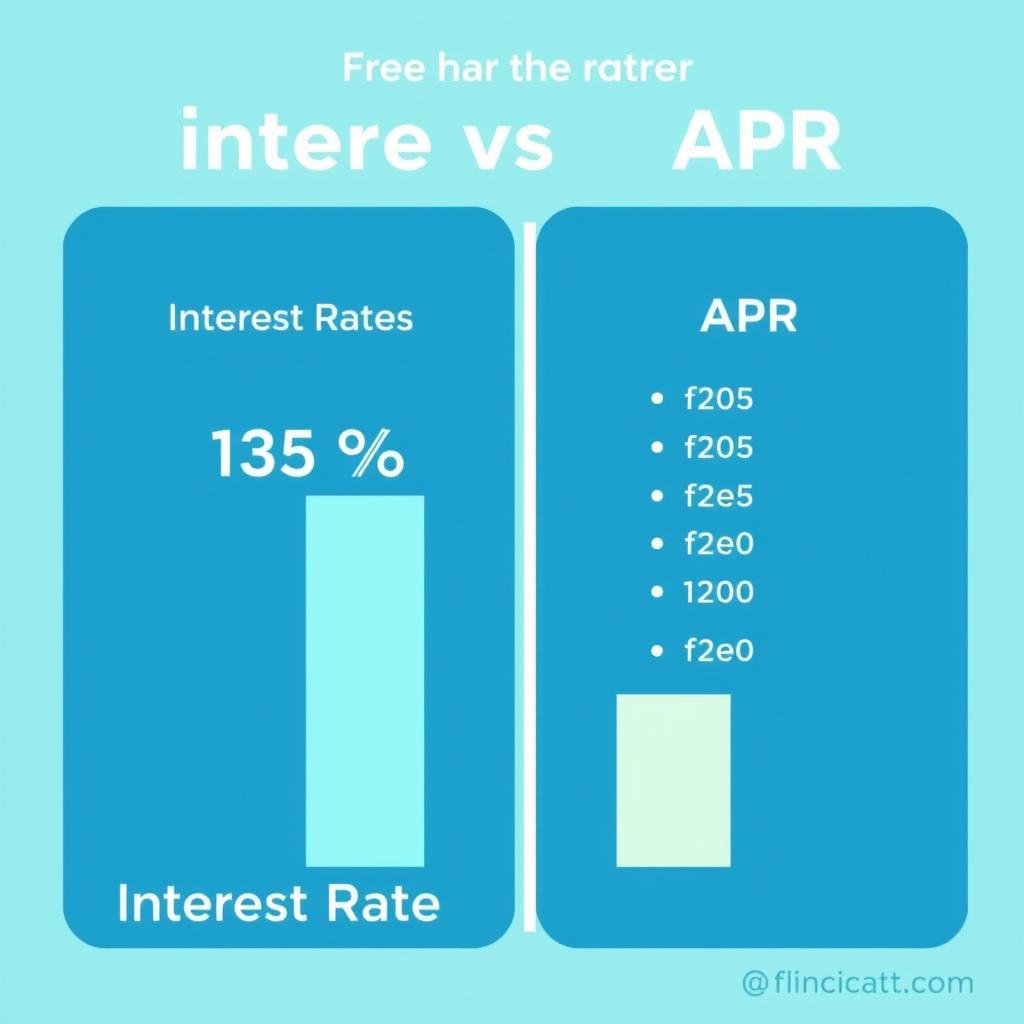
The Truth in Lending Act requires lenders to disclose the APR, not just the interest rate, so borrowers can accurately compare loan offers from different lenders.
Why APR Matters More Than Interest Rate
Two loans with identical interest rates can have very different APRs. For example, a mortgage with a 4% interest rate might have an APR of 4.25% when including all fees, while another lender might offer the same 4% interest rate but an APR of 4.5% due to higher fees. The second loan would cost you more over time, despite having the same advertised interest rate.
How to Calculate APR
Understanding how APR is calculated helps you better evaluate loan offers. The basic formula for calculating APR includes the interest rate plus any additional fees, spread over the loan term.
APR Formula
The standard formula for calculating APR is:
APR = (((Interest + Fees) ÷ Loan amount) ÷ Number of days in loan term) × 365) × 100
Step-by-Step Calculation Example
Let's walk through calculating the APR on a $10,000 personal loan with a 5% interest rate, $300 in fees, and a 3-year term:
| Step | Calculation | Result |
| 1. Calculate total interest | $10,000 × 5% × 3 years | $1,500 |
| 2. Add fees to interest | $1,500 + $300 | $1,800 |
| 3. Divide by loan amount | $1,800 ÷ $10,000 | 0.18 |
| 4. Divide by days in loan term | 0.18 ÷ (3 × 365) | 0.000164 |
| 5. Multiply by 365 | 0.000164 × 365 | 0.06 |
| 6. Multiply by 100 for percentage | 0.06 × 100 | 6% |
In this example, although the interest rate is 5%, the APR is 6% when including the $300 in fees. This higher percentage reflects the true cost of the loan.
Types of APR
Not all APRs are created equal. Different financial products have different types of APRs, and understanding these distinctions is crucial for making informed borrowing decisions.
Fixed vs. Variable APR
Fixed APR
- Remains constant throughout the loan term
- Provides predictable payments
- Protects against rising interest rates
- Typically higher than initial variable rates
Variable APR
- Changes based on an index rate (like prime rate)
- Often starts lower than fixed rates
- Payments can increase if rates rise
- Beneficial in falling rate environments
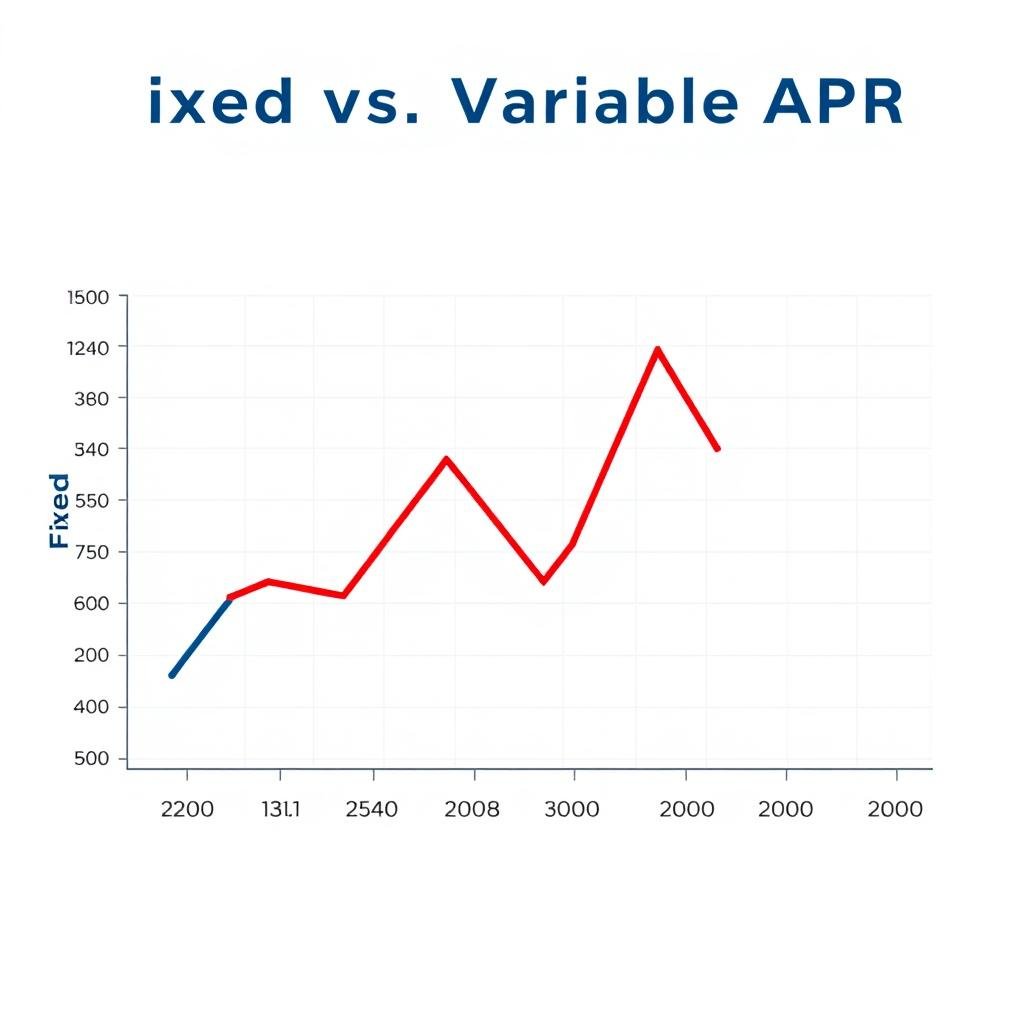
Credit Card APR Types
Credit cards often have multiple APRs that apply to different types of transactions:
| APR Type | Description | Typical Range |
| Purchase APR | Applied to regular purchases when you carry a balance | 14% - 29% |
| Balance Transfer APR | Applied to balances transferred from other cards | 14% - 29% (often with promotional rates) |
| Cash Advance APR | Applied to cash withdrawals from your credit card | 22% - 29% |
| Penalty APR | Applied when you violate card terms (like late payments) | 29% - 31% |
| Introductory APR | Promotional rate for new cardholders | 0% - 10% for 6-18 months |
Important: With credit cards, the APR and interest rate are typically the same because credit card APRs don't include annual fees or other charges in the calculation.
Specialized APR Calculators
Different loan types have unique characteristics that affect APR calculations. We offer specialized calculators for the most common loan types.
Mortgage APR Calculator

Calculate the true cost of home loans including points, origination fees, and closing costs.
Auto Loan APR Calculator
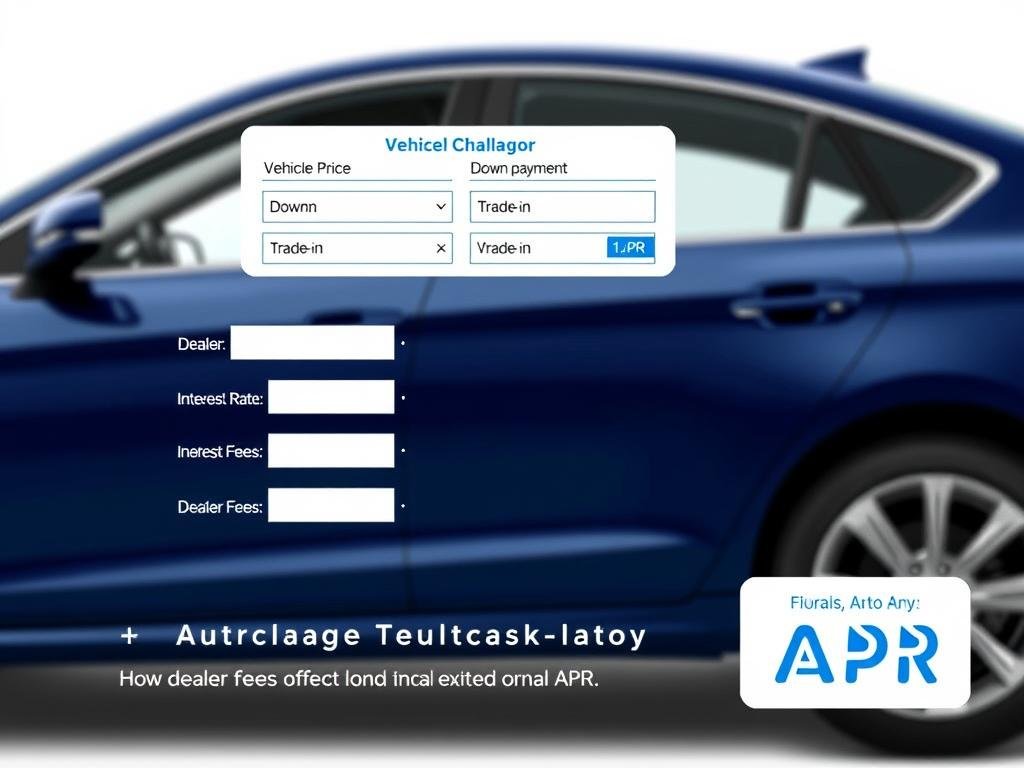
Determine the real APR on vehicle financing including dealer fees and add-ons.
Credit Card APR Calculator
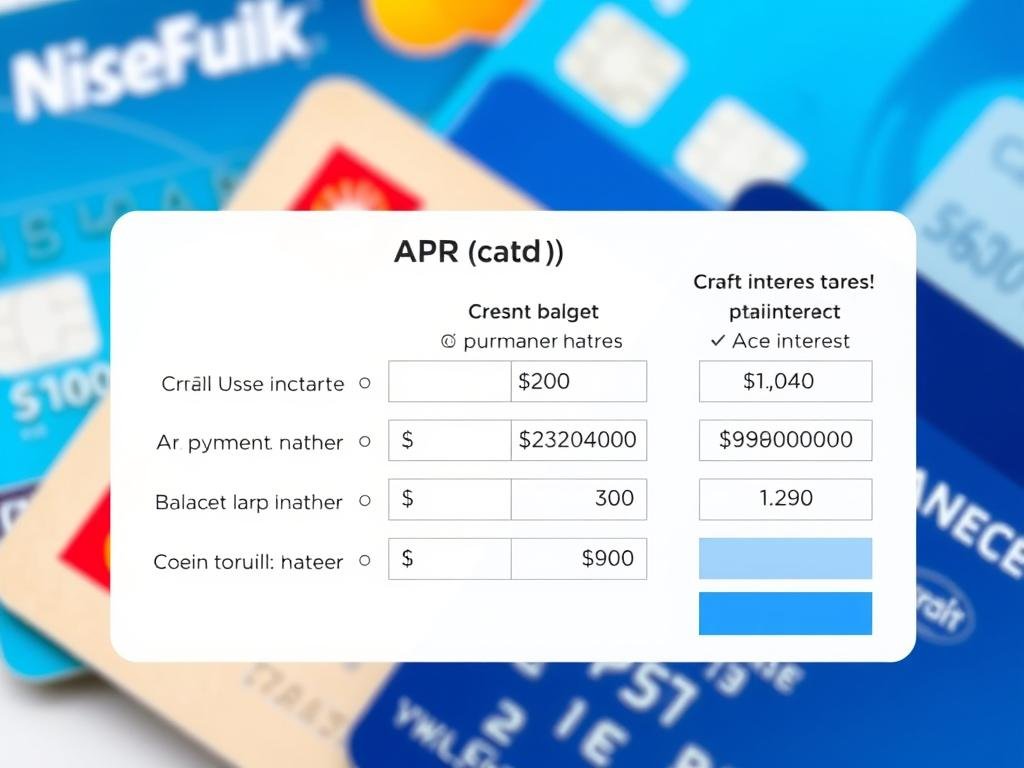
Calculate interest costs for different credit card transaction types and payment scenarios.
Real-World APR Calculation Examples
Let's look at how APR works across different loan types with practical examples.
Mortgage Loan Example
For a $300,000 mortgage with a 30-year term and 5% interest rate:
- Loan amount: $300,000
- Interest rate: 5%
- Loan term: 30 years
- Origination fee: $3,000 (1%)
- Other closing costs: $4,500
- Resulting APR: 5.28%
The difference between the interest rate and APR may seem small, but over 30 years, it represents thousands of dollars in additional costs.
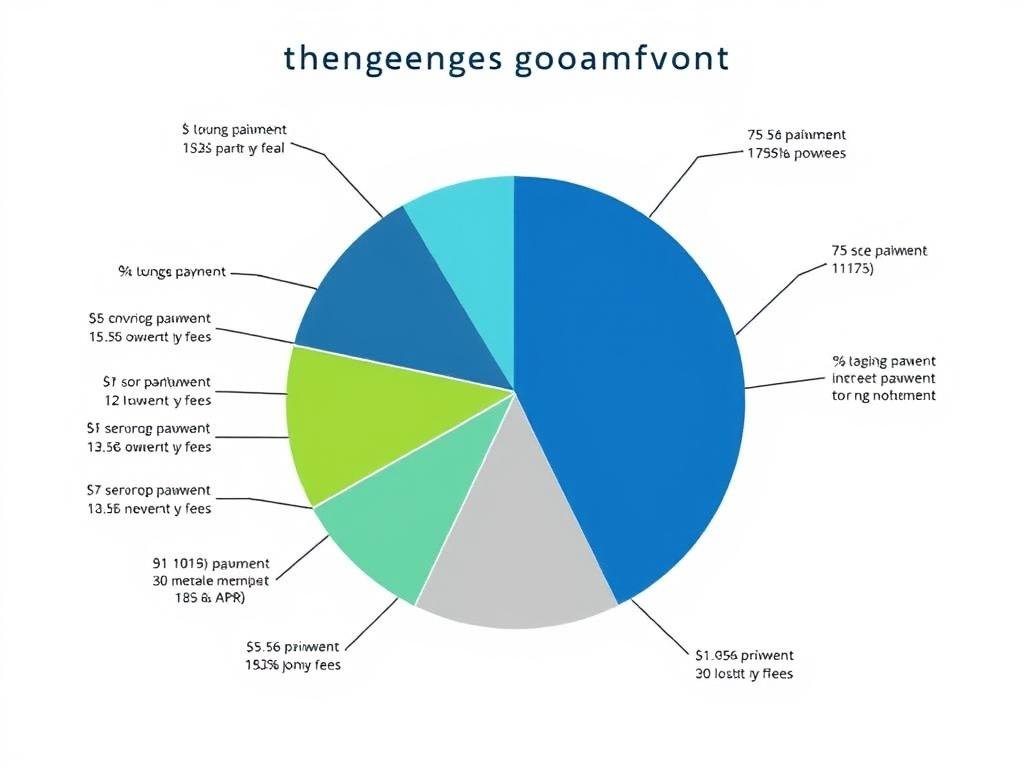
Personal Loan Example
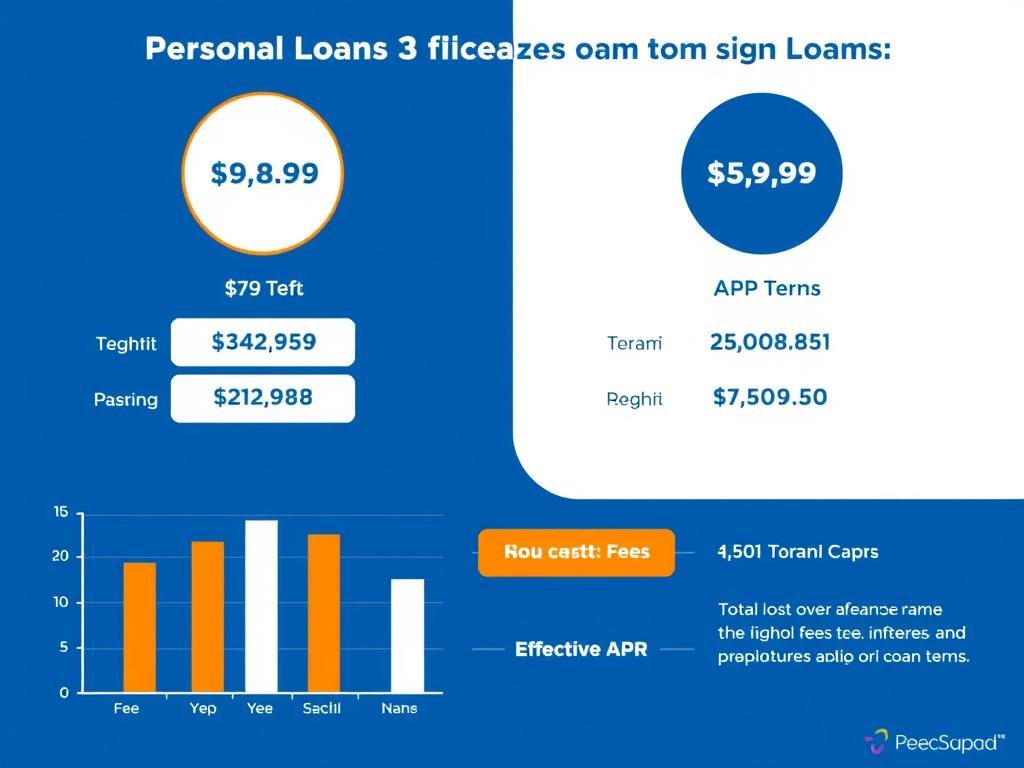
For a $15,000 personal loan with a 3-year term and 10% interest rate:
- Loan amount: $15,000
- Interest rate: 10%
- Loan term: 3 years
- Origination fee: $450 (3%)
- Application fee: $100
- Resulting APR: 11.73%
The fees add nearly 2 percentage points to the effective rate, significantly increasing the total cost of borrowing.
Credit Card Example
For a credit card with an 18% APR and $2,000 balance:
| Payment Strategy | Monthly Payment | Time to Pay Off | Total Interest Paid |
| Minimum Payment (2%) | $40 (decreasing) | 30 years, 1 month | $4,931 |
| Fixed $100 Monthly | $100 | 2 years | $385 |
| Pay in Full Monthly | Full balance | 1 month | $0 |
This example demonstrates how the same APR can result in dramatically different costs depending on your repayment strategy.
APR vs. APY: Understanding the Difference
While APR and APY (Annual Percentage Yield) may sound similar, they represent different ways of expressing interest rates.
What is APY?
Annual Percentage Yield (APY) accounts for compound interest, showing the effective annual rate when interest is added to the principal. APY is typically used for savings accounts and investments.
APY Formula: APY = (1 + r/n)^n - 1
Where r = interest rate and n = number of compounding periods per year
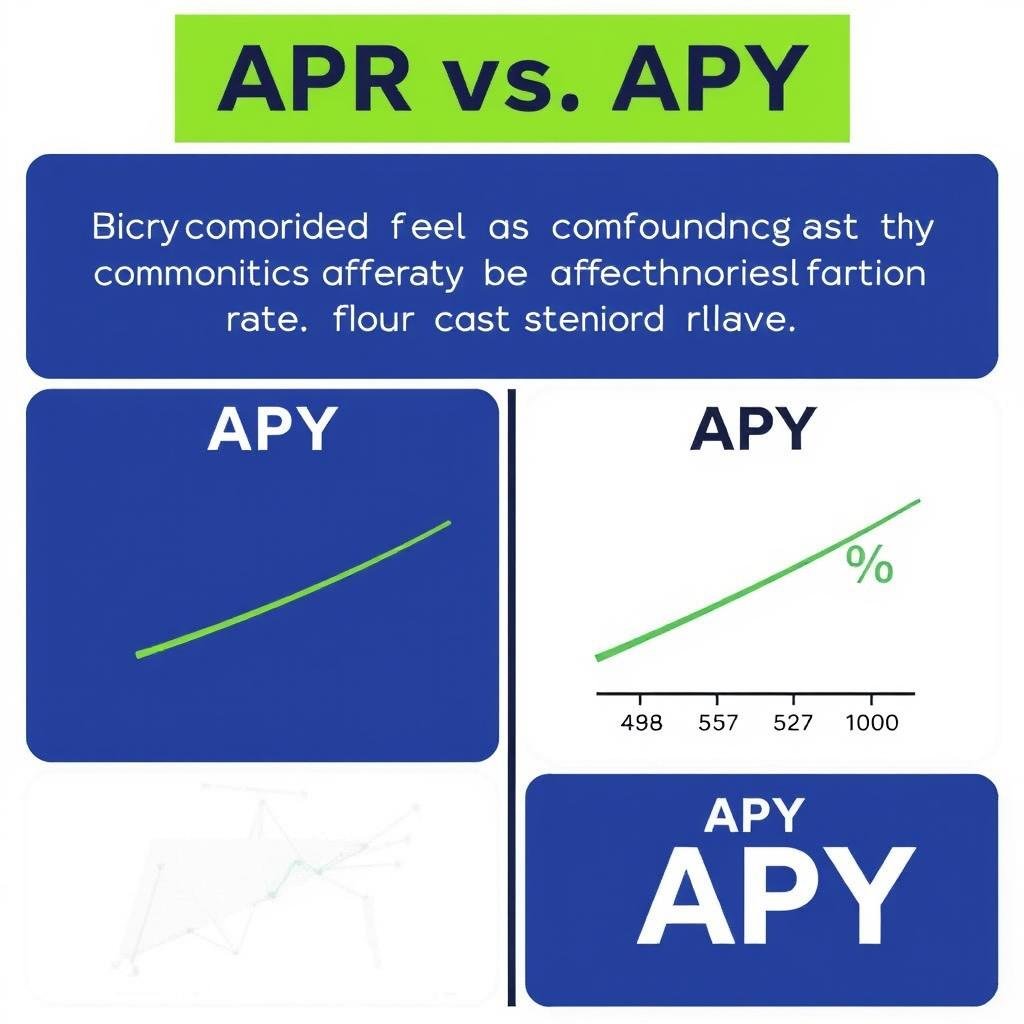
APR vs. APY Comparison
For a 10% interest rate compounded monthly:
| Measure | Value | Explanation |
| Nominal Rate | 10.00% | The stated interest rate |
| APR | 10.00% | Annual rate without compounding |
| APY | 10.47% | Effective annual rate with monthly compounding |
Financial institutions typically advertise the more favorable rate: APR for loans (appears lower) and APY for savings accounts (appears higher).
Tips for Getting Lower APR Rates
Securing a lower APR can save you thousands of dollars over the life of a loan. Here are proven strategies to help you qualify for better rates:
Improve Your Credit Score
- Pay all bills on time
- Reduce credit card balances
- Avoid applying for new credit before a loan application
- Check your credit report for errors
- Keep old accounts open to maintain credit history length
Shop Around and Compare Offers
- Get quotes from multiple lenders
- Compare APRs, not just interest rates
- Consider credit unions, which often offer lower rates
- Use rate comparison tools and calculators
Negotiate and Time Your Application
- Ask lenders to match competitive offers
- Consider larger down payments to reduce risk
- Apply when interest rates are trending downward
- Look for relationship discounts with your bank
- Consider a cosigner with excellent credit

Ready to find your best loan rate?
Use our APR calculator to compare offers and find the most affordable financing option for your needs.
Common APR Mistakes to Avoid
Even financially savvy consumers can make mistakes when evaluating APRs. Here are some common pitfalls to avoid:
Focusing Only on Monthly Payments
A lower monthly payment often means a longer loan term, which can result in paying significantly more interest over time despite a similar APR.
Ignoring the Loan Term
Two loans with identical APRs but different terms will have very different total costs. Always consider both the APR and the loan duration.
Not Reading the Fine Print
Some loans have variable APRs that can increase after an introductory period. Make sure you understand if and when your rate might change.
Overlooking Prepayment Penalties
Some loans charge fees if you pay them off early, which can negate the savings from a lower APR if you plan to pay ahead of schedule.
Assuming All Fees Are Included
Not all fees are included in APR calculations. For mortgages, costs like title insurance and appraisal fees are typically excluded.
Warning: Promotional APRs, like 0% offers on credit cards, typically expire after a set period. Mark your calendar and have a plan for the balance before the regular APR kicks in.
Frequently Asked Questions About APR
What's a good APR for a credit card?
A good credit card APR typically ranges from 12% to 17% for those with excellent credit. The average credit card APR is around 18-20%. However, what constitutes a "good" APR depends on the current market rates and your credit profile. Those with lower credit scores may see APRs of 24% or higher.
Can I negotiate my APR with lenders?
Yes, APRs are often negotiable, especially for mortgages and personal loans. If you have good credit and competing offers, lenders may be willing to match or beat other rates. For credit cards, you can call your issuer and ask for a lower rate, particularly if you've been a good customer or your credit score has improved since you opened the account.
How does APR affect my monthly payments?
A higher APR means you'll pay more interest over the life of the loan. For installment loans like mortgages or auto loans, a higher APR results in higher monthly payments. For credit cards, a higher APR means more interest accumulates on any balance you carry from month to month, though it doesn't affect your minimum payment calculation significantly.
Why is my credit card APR so high compared to other loans?
Credit cards typically have higher APRs than secured loans like mortgages or auto loans because they're unsecured debt—there's no collateral the lender can claim if you default. This higher risk to the lender translates to higher interest rates. Additionally, credit cards offer revolving credit with flexible repayment terms, which adds to the lender's risk profile.
Does paying off a loan early affect the APR?
The stated APR doesn't change if you pay off a loan early, but the effective APR (what you actually pay) can be higher. This is because upfront fees are spread across fewer payments, making each fee a larger percentage of the total amount borrowed. However, paying off a loan early still typically saves you money in total interest paid, even if the effective APR is higher.
Understanding APR: Your Key to Smarter Borrowing
The Annual Percentage Rate (APR) is more than just a number—it's a powerful tool that helps you understand the true cost of borrowing and make informed financial decisions. By using our APR calculator and applying the knowledge from this guide, you can compare loan offers accurately, potentially save thousands of dollars over the life of your loans, and take control of your financial future.
Remember that the lowest APR isn't always the best deal if it doesn't align with your financial goals and repayment timeline. Consider all aspects of a loan offer, including the term, fees, and your own financial situation, to find the option that truly works best for you.
Ready to calculate your APR?
Use our free calculator tools to understand the true cost of your loans and make better financial decisions.